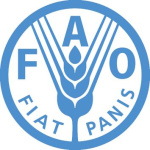- Settore: Agriculture
- Number of terms: 87409
- Number of blossaries: 0
- Company Profile:
Established in October 1945 with the objective of eliminating hunger and improving nutrition and standards of living by increasing agricultural productivity, FAO coordinates the efforts of governments and technical agencies in programs for developing agriculture, forestry, fisheries, and land and ...
A method of stabilizing enzymes by binding antibodies to them. The antibodies should not block the active site of the enzyme, as otherwise the protein is stabilized but is inactive as a catalyst. Monoclonal antibodies are usually used as they bind to specific bits of the protein surface. If the enzyme tries to unfold into an inactivate structure, it must not only overcome its own binding energy but also throw off all the bound antibodies; this requires more energy, and so is a correspondingly slower process.
Industry:Biotechnology
A method of substituting a cloned gene, or part of a gene, which may have been mutated <i>in vitro</i>, for the wild-type copy of the gene within the host's chromosome.
Industry:Biotechnology
A method used to detect the proteins encoded by cloned DNA. The cloned DNA is bound to a nitrocellulose filter and a crude preparation of mRNA is hybridized to the filter-bound DNA. Only mRNA sequences homologous to the cloned DNA will be retained on the filter. These mRNA molecules can then be removed by high temperature or by using formamide. The purified mRNA is then placed in an <i>in vitro</i> translation system and the proteins encoded by the message can be analysed by electrophoresis through a polyacrylamide gel.
Industry:Biotechnology
A method used to identify the proteins encoded by a cloned DNA sequence. A crude cellular mRNA preparation, composed of many individual types of mRNA, is hybridized with cloned DNA. Only mRNA molecules homologous to the cloned DNA will anneal to it. The rest of the mRNA molecules are put into an <i>in vitro</i> translation system and the protein products are compared with the proteins obtained by use of the whole mRNA preparation.
Industry:Biotechnology
A micro-organism able to grow in the temperature range 20 to 50°C; optimal growth often occurs at about 37°C.
Industry:Biotechnology
A micro-organism that can grow at temperatures below 30°C and as low as 0°C.
Industry:Biotechnology
A micro-organism that grows in the presence of oxygen. Opposite: anaerobe.
Industry:Biotechnology
A micro-organism whose natural habitat is near, on or in plant roots.
Industry:Biotechnology
A microscope that uses an electron beam focused by magnetic "lenses."
Industry:Biotechnology
A microscope with a low magnifying power of about 50×, used to examine or excise small plant or animal parts.
Industry:Biotechnology
